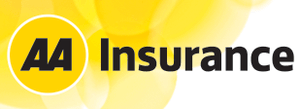The Student Volunteer Army is on the march, generating approximately 1.6 million hours of volunteering from roughly 35,000 secondary school students in just five years.
For Rebekah Brown, the pathway to volunteering started with her singing coach. With a passion for the arts, the suggestion to volunteer at Acting Antics, a drama camp for primary school students, was a natural fit. And like thousands of other high schoolers across Aotearoa, that first step of service has opened the door to a much bigger world.
Born from the 2010 Christchurch earthquake, the Student Volunteer Army (or SVA for short) is now all grown up. While crisis support remains in its DNA, it has also taken on the bigger purpose of developing the next generation of volunteers.
In doing so, it secured a charity partnership with AA Insurance, providing essential funding to expand its efforts nationwide.
Now in her final year at Wairarapa College, Brown is one of 35,000 students from almost 300 schools across Aotearoa who have taken part in the SVA Service Award since its creation in 2019.
Brown is on track for a well-earned gold pin (500 hours) before the end of the year.
“I knew a lot of students who would get involved with service, but didn’t see anything in it for them,” Brown says. “They were a bit resistant to doing that over their schoolwork.”
Recognising that many students don’t see how volunteering is relevant to them, the SVA is putting a big focus on getting students involved in areas they already care about, says chief executive Emily Byrne.
“A big part is the informal pieces of service that they’re already doing, and they’re already passionate about. Our programmes are about inspiring action to have an impact in their local communities, using the skills they already have and showing them that they can also get recognition for it.”
The SVA Service Award provides a platform for students to record and reflect on their volunteering, and earn badges based on their total hours contributed. It’s also a real-world addition to their CV. Every student receives a Summary of Service document that creates a quantifiable, recognised testament to the skills and experience gained through their volunteering efforts.
Fleur Hardman, a teacher at Wairarapa College, said the college has been running the SVA Service Award for three years, and has seen more students sign up every year.
“Students are aware that it’s really good for their CV, because rather than just talking about their service generically, they can show evidence of how much service they’ve done.”
For AA Insurance, when looking for more ways to help communities in times of crisis, it saw SVA as a key part of the puzzle.
“We love the way SVA empowers young people to volunteer in their communities because this strengthens the connections that underpin community resilience,” says Trent Brash, AA Insurance’s senior manager for sustainability and social impact.
“What many of these students might not realise is that through volunteering they are picking up a lot of soft skills. They’re learning to empathise and relate to different people.
“Picking up these skills in peacetime is handy for when the next cyclone or earthquake hits, and our communities need all the support they can get. Community response is very important to us. We understand the value of face-to-face interactions with people and the role that plays in times of crisis.
“When you’re helping people in crisis, immediately after a massive disaster it can be quite confronting,” Brash says. “Our nationwide team can also help the students with that. They might not have had that life experience or training to help people in those situations, and that’s where we can step in to build on those soft skills – essentially sharing what we know to help uplift capability among the students.”
Every year, SVA gives a special award to the top volunteer at each school, and the top individual nationally. Last year’s winner, Donia Mikhaeil from Rolleston College, logged a monstrous 1,149 hours.
“I was nowhere near as good as these kids when I was their age,” Byrne laughs. “If you look at them as the future generation, the next generation of community leaders, it is incredible what they are achieving and doing.”
“It’s heartwarming to see all the things these students are doing and how much they’re willing to step up to make a difference for their community.”


